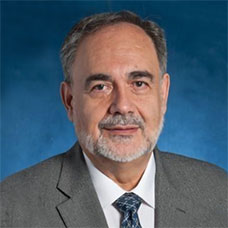Migration is a process entailing significant challenges and potential negative psychosocial outcomes, especially when caused by forced displacement due to violence, armed conflict, extreme poverty, or the impacts of climate change. In the last decade, there has been a mass exodus of migrants from Central America’s Northern Triangle, a region comprising Honduras, El Salvador, and Guatemala. Since 2014, the US has registered record numbers of families, unaccompanied children, and adolescents from the Northern Triangle seeking asylum at its southwestern border. Most report violence as their reason for migration, and many show high rates of psychological distress due to extreme hardships faced throughout the region.
Most research on Latinx mental health in the US has been conducted in regions with large, well-established communities, formed mainly by individuals of Mexican descent with strong social networks, and, in some cases, access to health and social support services. Research on the stressors and needs of Latinx immigrants living in new settlement areas is limited, particularly among people from the Northern Triangle.
During the last two decades, Latinx immigrants moved to non-traditional areas including Baltimore, where about half of the emergent Latinx population comes from Northern Triangle countries. Our research evaluated data from a program that provides specialty services to uninsured residents of the communities surrounding Johns Hopkins Hospital and Bayview Medical Center. Undocumented Latinx immigrants became the primary users of this program following the expansion of Medicaid under the Affordable Care Act, providing us with a unique opportunity to evaluate their patterns of health care utilization.
We found that, among all diagnostic categories, the highest number of medical encounters with Latinx patients were due to mental health diagnoses, mostly for mood and anxiety disorders.
We found that, among all diagnostic categories, the highest number of medical encounters with Latinx patients were due to mental health diagnoses, mostly for mood and anxiety disorders. The most frequent reason to seek care was unexplained pain, which falls into the International Classification of Diseases diagnostic category of “symptoms, signs, and ill-defined conditions.” Such clinical manifestations may present as isolated symptoms. But a body of research argues that, in certain cultural contexts, these symptoms may be more sensitive indicators of traumatization than those warranting a psychiatric diagnosis (like PTSD).
Previous literature also shows that Latinx people experiencing mental health problems tend to rely on the general medical sector, rather than seeking specialty mental health services, due to high rates of somatization and stigma towards mental illness. More research is needed to better understand how members of diverse sociocultural groups communicate individual and collective suffering via reference to shared beliefs and local ideas about the functioning of the body and mind.
As the US population grows more diverse, we need to develop culturally and linguistically competent services and a diverse health care workforce familiar with the specific manifestations of emotional distress among different sociocultural groups. This is particularly important for framing screening mechanisms and treatment options in appropriate ways.
Given the increasing number of immigrants arriving from the Northern Triangle, health policy makers and the medical and public health community must be aware of and able to meet the mental health needs of these marginalized and understudied populations.
Finally, it is important to acknowledge as clinicians, researchers, policy makers, and public health practitioners, that Latinx are not a monolithic group. Each Latin American country has its own complex historical, cultural, and social dynamics. Therefore, the study of contextual factors — such as prior immigration experiences, exposure to violence, the development of social support networks, and access to services during resettlement — will inform the design of comprehensive tailored public health programs.
Photo via Getty Images















